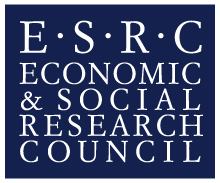These questions were at the centre of the ESRC Human Rights Law Implementation Project (HRLIP) seminar on the Evolving Remedial Practice of the European Court of Human Rights, held at the Council of Europe (CoE) in Strasbourg on 8 November 2017.
Given the failure of certain states to implement judgements, the Seminar provided a timely opportunity for state representatives, Judges and Registry lawyers from the Court, staff of the Department for the Execution of Judgements and other Council of Europe bodies, as well as academics and civil society representatives, to exchange views on the Court's current approach to remedies and the future direction it should take.
Specifically four presentations and a Q & A session had the panelists and some ninety participants discussing questions relating to the impact of specific or prescriptive judgements on the division of responsibilities, under Article 46 of the Convention, of the various Council of Europe institutions, in particular the Court and the Committee of Ministers (the inter-governmental arm of the CoE, which is formally tasked with monitoring the execution of judgements).
At the event, the HRLIP’s Europe team posited that the perception that the Court has moved away from its formerly strictly limited, declaratory approach to remedial measures by sometimes indicating specific non-monetary individual measures or general measures was not borne out by the statistics. Their research has revealed, among other things, that:
-
Judgments specifying remedial measures are still a small fraction of the Court’s case law and their use has not increased in recent years.
-
The Court indicates general measures more often than individual measures in both pilot judgments and ‘quasi-pilot’ or Article 46 judgments.
-
The Grand Chamber is proportionately more likely than Chambers of the Court to indicate specific remedial measures.
The debate laid bare certain difference in views prevailing about the desirability of the Court being (or becoming) more prescriptive in terms of remedies. Robert Spano, Judge at the ECtHR elected in respect of Iceland, stressed that Strasbourg Court Judges had rightly been hesitant in crossing the bridge from their core role of objective legal analysis to the kind of policy and even political assessment traditionally performed by the Committee of Ministers, which is often necessary for an informed view on whether specific remedial measures should be indicated. It was also highlighted that a state’s failure – or outright refusal – to implement a ruling in which the Court clearly spelled out the measures to be taken to implement it might jeopardise the Court’s authority and perceived legitimacy.
Others – including Isabelle Niedlispacher, Government Agent in respect of Belgium and Chair of the Committee of Experts on the System of the European Convention on European Rights (DH-SYSC); Kevin Steeves, Director of the European Implementation Network (EIN); and Pavlo Pushkar, Head of Division in the Department for the Execution of Judgments of the European Court of Human Rights – seemed less concerned about undue encroachment by the ECtHR onto the role of the Committee of Ministers. While acknowledging that there was no single overarching model of remedial practices that would fit each individual case, they agreed that, in some instances – e.g. in situations where an ongoing execution process is stalled for one reason or another – more prescriptiveness in ECtHR judgments may provide useful assistance for execution and create leverage for ‘willing’ domestic actors, including civil society representatives, to exert pressure on decision-makers with a view to ensuring full implementation.
Against this backdrop and given the Court’s prudent approach to including specific remedial indications in its judgments, concerns about upsetting the institutional balance between the ECtHR and the Committee of Ministers, or about states exhibiting mistrust of a more proactive stance on remedies by the ECtHR, may appear overstated – especially in the absence of any evidence of governments having objected to the power of the Court to indicate a specific measure in any particular case.
Overall, the seminar sparked great interest among academics, Judges and lawyers from the Court, government representatives and staff of the Committee of Ministers. It provided an opportunity for a discussion on a topical issue, which should be seen as a way to find synergies to enhance the Convention system and to promote and accelerate the implementation of judgments.
The HRLIP wishes to express its gratitude to the Council of Europe for making this event possible and is pleased to make available the following background information:
-
Handout (PDF, 708kB) and presentation (PDF, 501kB) by the HRLIP research team
-
Audio files of the speakers’ presentations and the discussion
-
Written presentations:
- Robert Spano speaking notes (PDF, 387kB), Judge Judge at the ECtHR elected in respect of Iceland
- Isabelle Niedlispacher speaking notes (PDF, 235kB) Government Agent in respect of Belgium and Chair of the Committee of Experts on the System of the European Convention on European Rights
- Pavlo Pushkar speaking notes (PDF, 393kB), Head of Division in the Department for the Execution of Judgments of the European Court of Human Rights

